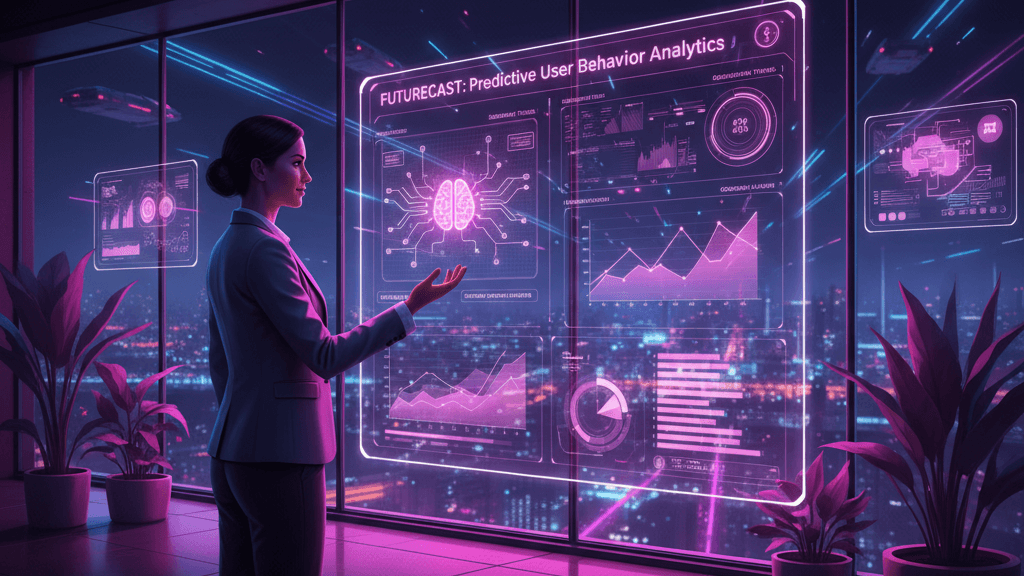AI form builders are revolutionizing the way organizations gather and process information. With intelligent automation, personalization, and real-time data handling, these tools significantly boost efficiency and user experience.
However, the same capabilities that make them powerful also introduce unique challenges in the realm of data privacy and compliance.
With data protection laws like the General Data Protection Regulation (GDPR) and the emerging EU AI Act, ensuring AI-powered forms remain compliant is no longer optional; it’s essential.
In this guide, we’ll explore how to responsibly leverage AI form builders while maintaining full compliance with privacy regulations.
What Are AI Form Builders and Why Do They Matter
AI form builders use artificial intelligence to automate form creation, personalize user interactions, and optimize data collection workflows.
These platforms can predict fields based on intent, auto-generate forms from descriptions, pre-fill user data using previous interactions, and analyze inputs to improve conversions.
This level of automation increases convenience and reduces human error. However, it also introduces risks if not managed properly, especially when collecting personal data across jurisdictions.
As more businesses adopt AI-powered forms, it becomes critical to understand their implications for user data and privacy compliance.
Overview of GDPR and the EU AI Act
The General Data Protection Regulation (GDPR) is a comprehensive privacy regulation applicable to any organization processing personal data of EU citizens.
It emphasizes principles such as lawfulness, fairness, transparency, purpose limitation, data minimization, accuracy, and accountability. Organizations using AI to process personal data must ensure their tools and workflows uphold these principles.
The EU AI Act, which is still under adoption, aims to regulate high-risk AI systems, including those used for profiling, biometrics, or affecting individual rights.
AI form builders may fall under this regulation depending on the context, especially if they involve automated decision-making, profiling based on sensitive data, or use in regulated sectors like finance or healthcare.
Privacy Challenges with AI-Powered Form Builders
AI introduces new risks to privacy that traditional form builders don’t typically face. One of the primary concerns is the opacity in data handling, as AI logic can often function as a black box, making it difficult to explain how decisions are made.
Consent management becomes another challenge, with forms sometimes pre-selecting or inferring data fields without explicit consent from the user. Additionally, AI tools may over-collect information, which goes against the principle of data minimization.
Lastly, there’s a lack of user control, where individuals may not fully understand how their data is processed or reused.
Building GDPR-Compliant Forms with AI
To build privacy-compliant AI-powered forms, organizations should start by selecting vendors that prioritize data protection. Choose platforms that host data in the EU or provide clear Data Processing Agreements (DPAs) and offer features such as encryption at rest and in transit.
Implementing Privacy by Design is crucial; forms should be designed with data protection built in from the start, avoiding pre-filled sensitive fields unless explicitly justified.
Consent should be transparent and granular, with multi-layered options allowing users to understand what data will be collected and how it will be used. Providing direct links to privacy policies within the form is also recommended.
Data minimization should be enforced by only asking for data that is strictly necessary for the intended purpose, and opt-out mechanisms should be in place to let users withdraw consent easily.
Automated acknowledgments and follow-up emails confirming changes in consent preferences can help strengthen user trust.
Conducting a Data Protection Impact Assessment (DPIA)
A Data Protection Impact Assessment (DPIA) is mandatory under GDPR when data processing is likely to result in high risk to individuals’ rights and freedoms. AI-powered forms often qualify for this requirement.
To conduct a DPIA, organizations should begin by describing the processing activity, specifying what AI is used and what data is collected.
They must then assess the necessity and proportionality of the data use, determining whether it’s justified. Next, identify potential risks, such as profiling, bias, or lack of transparency.
Define mitigation measures like encryption, user controls, and detailed logs. Lastly, document the entire process using a DPIA template to ensure readiness for potential audits.
Real-World Use Cases and Lessons Learned
In one example, a SaaS company implemented an AI form builder for onboarding new clients. By integrating privacy-by-design principles and automated audit logs, the company reduced manual effort and improved compliance. The result was increased transparency and higher user opt-in rates.
In another instance, a nonprofit organization utilized AI-powered forms to streamline donation processes. Initially, they failed to separate consent for email marketing from donation processing, leading to user complaints.
After redesigning their form logic and interface to include more granular consent options, the organization saw a drop in unsubscribes and greater compliance with GDPR requirements.
Technical Integration and Internal Policy Alignment
For AI forms to be truly compliant, they must integrate seamlessly with back-end systems while maintaining robust privacy protections. When integrating with customer relationship management (CRM) systems, ensure that only necessary data fields are synchronized, and avoid duplicating sensitive information.
Establish workflows to handle data access, correction, and deletion requests in accordance with GDPR’s data subject rights. Log retention policies should be enforced, with detailed audit trails maintained for all data access and changes.
Additionally, internal teams must be trained to understand how the AI form builder processes data, ensuring consistent application of privacy protocols across the organization.
EU AI Act Considerations for Form Automation
The upcoming EU AI Act classifies AI systems based on their risk level. Most basic AI form builders may fall under minimal risk, especially if they don’t involve profiling or sensitive data.
However, systems used for scoring individuals, recruitment, or determining access to services could be classified as high risk.
In such cases, organizations will need to maintain thorough documentation of decision-making logic, implement human oversight procedures, and conduct regular testing to mitigate bias.
Preparing for these requirements now can help future-proof compliance efforts as the regulation evolves.
Best Practices for Long-Term Compliance
To maintain long-term compliance, schedule regular audits of all active forms. Ensure that privacy content is localized for users in different regions, especially when operating across EU member states.
Maintain version history and archives of past form designs to support auditability. Update internal documentation whenever the platform or its features change.
Finally, keep track of third-party plugins or integrations, verifying that they meet GDPR standards and do not introduce new vulnerabilities.
How ZinQ AI Form Builder Can Help You in This
ZinQ AI form builder is specifically designed with privacy and compliance in mind, making it an ideal solution for organizations aiming to align with GDPR and the upcoming EU AI Act.
The platform integrates advanced privacy features like granular consent collection, built-in data minimization settings, and real-time compliance prompts to ensure your forms only capture necessary data.
With automated audit trails, encryption by default, and EU-based data hosting, ZinQ helps minimize legal risks while maximizing trust and transparency.
Moreover, ZinQ offers ready-to-use DPIA templates and privacy impact checklists that guide you through compliance assessments.
Whether you’re collecting user data for lead generation, surveys, or onboarding workflows, ZinQ ensures that every interaction respects the user’s rights and complies with evolving data protection laws.
If you’re looking for an AI form builder that puts privacy first without compromising on automation and usability, ZinQ is your go-to platform.
Conclusion and Next Steps
AI form builders are transforming how businesses collect and manage user data. Yet with innovation comes responsibility. Ensuring GDPR and AI Act compliance is not only a legal obligation but also an opportunity to build lasting trust with users.
Begin by auditing your current forms, choosing ethical and transparent AI tools, and embedding privacy into every stage of your data collection strategy. By doing so, you can harness the power of AI while upholding the highest standards of data protection.












